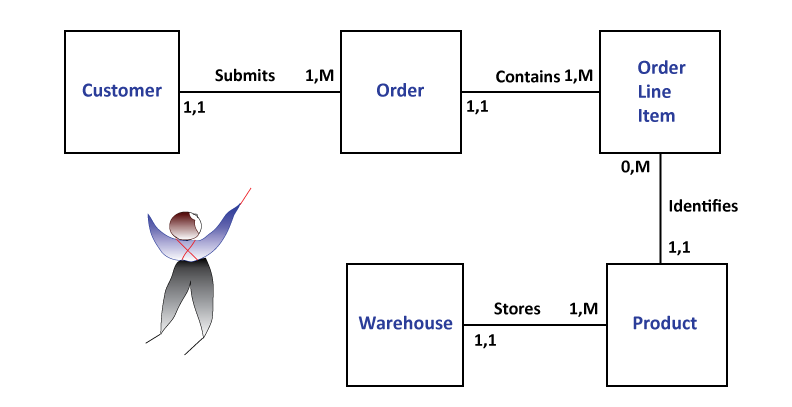April 2021 - the FoCuSeD™ Facilitator eNewsletter

A Business Data Model is for the Business, by the Business, and of the Business..., by Gary Rush IAF CPF | Master
Group Facilitation Skills
For a Business Data Model to be about the business, Data Analysts, those who build business data models, need to involve the business community in the modeling process since it requires dealing with basic people problems that require group facilitation skills. The Data Analyst needs to know “how to” use people tools to get everyone involved and ensure that are heard and contribute. Example: Using group facilitation skills such as ‘small groups’ to enable a safe way for people to participate.
Modeling Terminology
One basic problem for the business community is the modeling terminology used by the Data Analyst. Group facilitation skills ensure that the people participate but terms, such as Entity, Attribute, etc. shut people down. The more we simplify and get people understanding the process, the easier and more effective it becomes. What I use, “Thing” for Entity, “Thingette” for Attribute, etc., allows the business community to focus on the business rather than on the Modeling Terminology to build an accurate model.
Words that the Business Community Use, Requires Active Listening.
When the business community describes their business, they use different words to describe the same thing or the same word to describe different things, causing confusion. “I was asked to facilitate a data modeling session because the client used the word, ‘customer’ in a way that caused confusion. In that data modeling session, it was found that ‘customer’ was used to describe 12 different types of customers making it a catch-all bucket and meaningless. The only way to fix the problem was to actively listen, feed back what was said and ask them to clarify and define what each type of customer meant to them – they were surprised at what they learned.” Active listening is about clarifying communication, so when you hear patterns, trends, words used in different ways, etc., you ask questions to clarify. That is essential to overcoming communication issues and critical to building an accurate data model.
My Thoughts
‘Data Analysts’ need group facilitation skills to involve the business community and ensure all participate, speak to them in language that they understand to focus on the business, and most importantly, actively listen to clarify what is being said. When this comes together, the “aha”s will follow. ![]()

